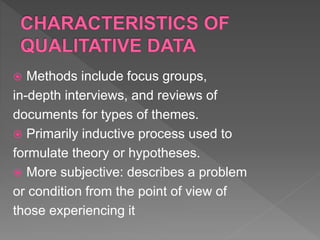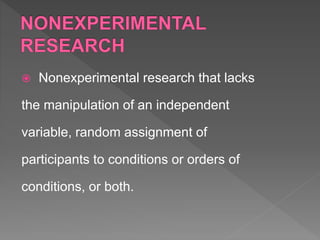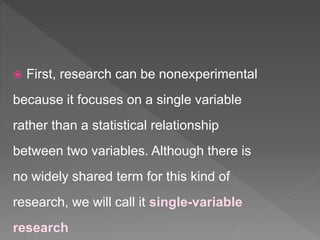The document discusses different types of research methods. It defines research as a systematic, scientific effort to gain new knowledge through processes like defining problems, formulating hypotheses, collecting and analyzing data, making deductions, and testing conclusions. Quantitative research is based on measurement and is suited for phenomena that can be expressed numerically using methods like surveys and statistical analysis. Qualitative research seeks in-depth understanding through naturalistic inquiry and methods like interviews. Experimental research strictly follows the scientific method to test hypotheses and determine causal relationships between variables. Nonexperimental research lacks manipulation of variables or random assignment.




































































